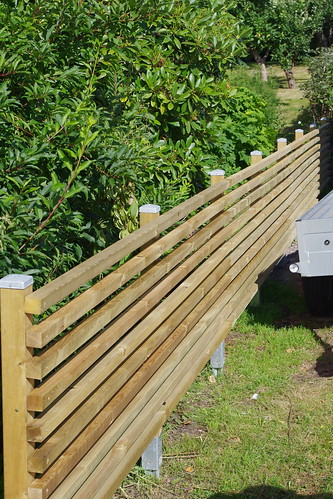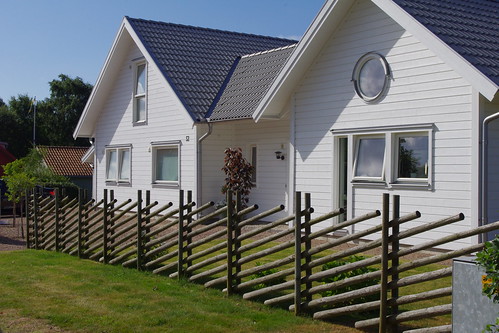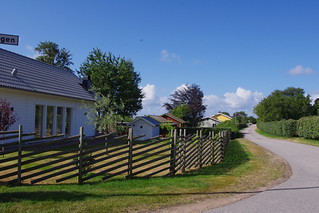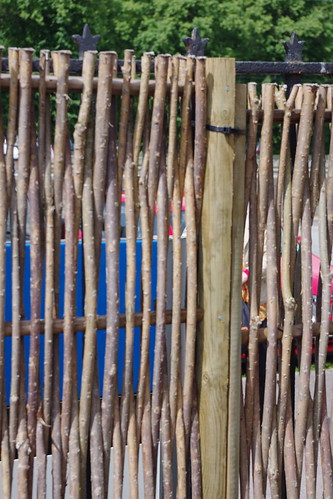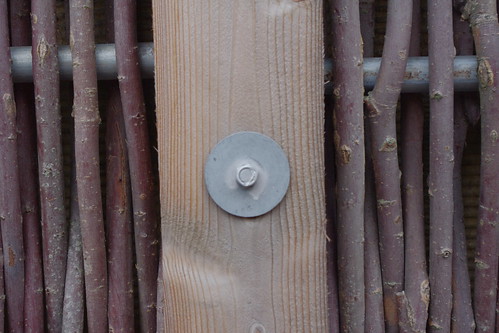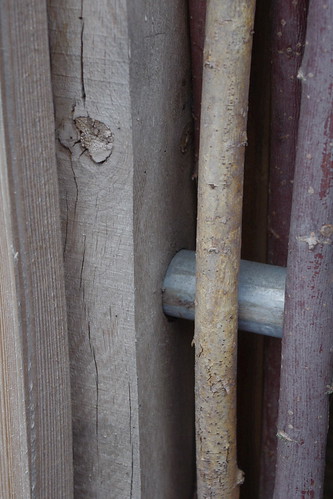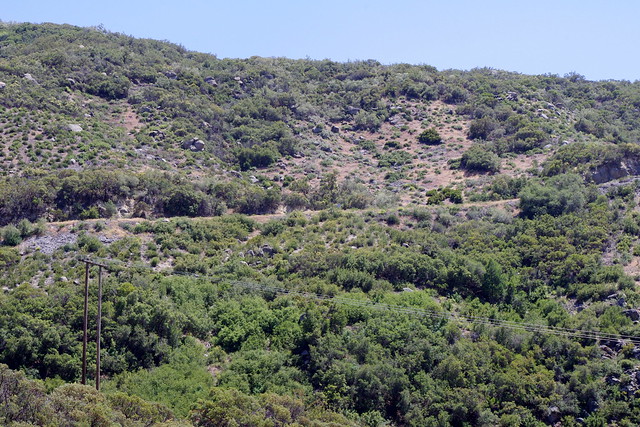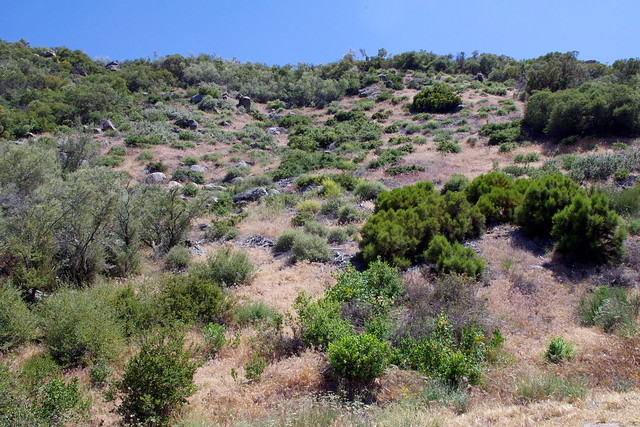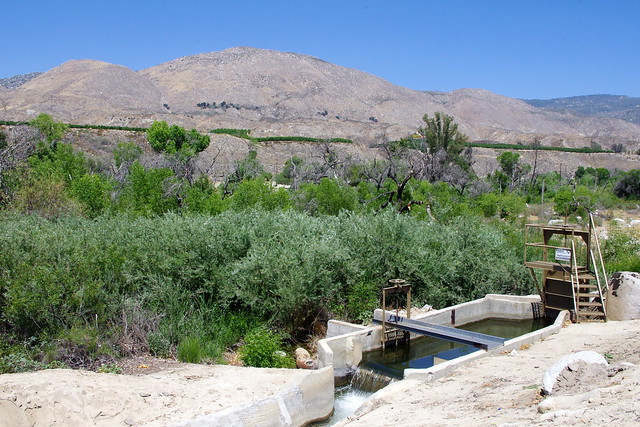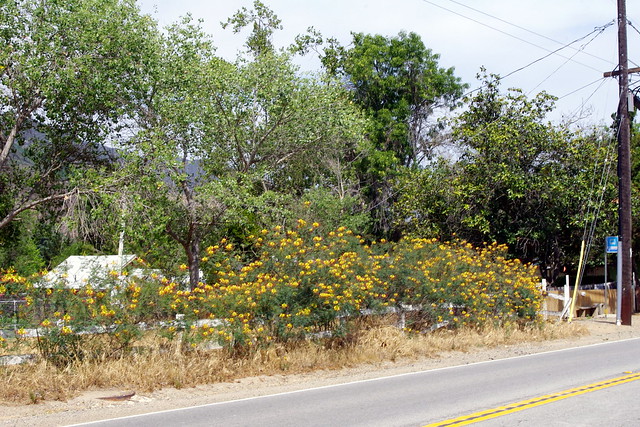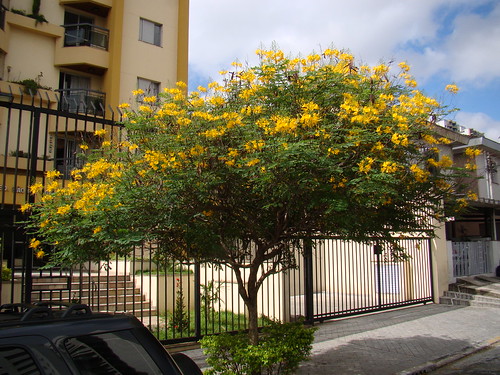 |
| image: Paweł Kuźniar |
 |
| Photo: Mine |
Nuthatch Nesting Video
This next video is also very illustrative of the same behavior of the Eurasian Nuthatch's nervous foraging habit of investigating by flitting in and out of cracks a crevices of stone walls or rock piles. But this little bird is different, yet similar in some habits. It's called Gärdsmyg or common Wren. This particular video caught my attention because the Önskevädersgatan Trolley Stop where I wait to ride to city center, I wait at the rail along side a rock line drainage ditch and invariably there are these little Wrens popping in and out of the rocks near the water's edge. The Nuthatch will often to the very same thing.
http://www.youtube.com/watch?v=35tZUqKrh2gWhat actually got me interested in writing a piece about this little bird was something I saw a Magazine article about creating a nesting cavity in a brick wall. As natural habitat components for cavity nesting birds become fast disappearing with more and more human development, many of these birds fall into decline. The designer is Aaron Dunkerton, a student at Kingston University in England, who claimed to have found solution and solve the problem with the Bird Brick, a fire-clamped cavity brick that could be built into walls and buildings to provide a sustainable nesting site for the birds. It was a perfect fit for these little cavity nesting birds and could be easily duplicated by anyone who is intuitive enough imagination to replicate such designs. But here is a quick view of what I'm talking about as far as nesting holes incorporated into a brick wall. The Bird Brick is a fire-clamped cavity brick that can be built into walls and buildings to provide a sustainable nesting site for sparrows.
 |
| Image: Aaron Dunkerton |
The Bird Brick is made from five different bricks that assemble to create an opening for the birds. To clean the cavities, you simply twist the stopper and pull it out. Designer Aaron Dunkerton suggests doing this every two to five years, though sparrows typically take care of it themselves. I remember this was one of my concerns when I first was intrigued with this idea. How in the world could it be maintained and kept hygienic ? I was also curious as to how it could attract other birds like the one on my topic which are much tinier. While there are Sparrows here in Sweden, mostly they are in the cities and not overly numerous in numbers like they are in warmer climates. The other birds like Wrens and Nuthatches are everywhere around my house since we are at the edge of the woods. I really don't know if I've ever seen a sparrow in our yard period. Below is the illustration of the clean out.
 |
| Image: Aaron Dunkerton |
Dunkerton’s design consists of five hand-made bricks that assemble to create a small, round opening that’s plugged with a brick stopper. At the bottom of this post I've posted his website link for further details. The hole is 1.25 inches diagonally, which makes it large enough for a sparrow (or other smaller bird varieties) to nest comfortably, but small enough to keep out unwanted visitors. The idea is that builders would install a cluster of three or four Bird Bricks during the construction of new buildings. Ideally, the bricks would sit anywhere from 6 to 15 feet from the ground. Dunkerton says this about sparrow communal habits:
“House sparrows are extremely sociable birds and like to nest in small little colonies.”But have you ever noticed that many of the cavity nesting Birds build nests in the oddest of places. I saw this very thing this past Spring when visiting a friend in Anza California. A family of Mountain Blue Birds had set up house in an old telephone utility box on a light pole that my friend Patrick never got around to using. Amazing, I should have photographed it, but we stood there a gazed at the for along while coming and going, both parents. This artificial nesting site set up was also mentioned by Dunkerton.
“You often find them nesting under loose tiles or in old broken vents in the side of buildings”But as buildings are patched up to improve insulation and green space disappears due to urbanization, sparrows are losing a sizable chunk of their nesting options. Apparently, over the last three decades, in the U.K. the house sparrow population has decreased around 70 percent as he shows on his website below, and the bird has found itself on the growing list of endangered species. Seriously, who ever thought Sparrows would become endangered ?
Anyway, the idea he came up with intrigued me and triggered all manner of other ideas for creating artificial nest habitats. Not just for Sparrows, but all sorts of other birds. This set up would be perfect for garden walls and not just buildings. And of course the size of the hole could be made smaller to accommodate the tinier native Song Bird's like Sweden's Nuthatches. This larger size of course would be shortened up by the Nuthatches with mud, but still, Sparrows and Martins could get there first if the hole was just their right size. Nuthatches collect various nuts and wedge them into tree bark or in holes in walls and will even cover secret larders with bark or moss. Who knows, maybe some of these brick bird holes could become winter storage catches for them. They are just such funny looking birds besides their cuteness.
Other people have come up with some more elaborate brick bird habitat Uptopias, but the one above by Aaron Dunkerton seemed the easiest to replicate and incorporate without being overly flashy by drawing attention to the area. Below is one beautiful but more complicated one and a link to this company. If a parson has the money and the creative time and patience, there is no limit as to what they can accomplish. Then below this image example, there are some other interesting reading references webpage links if further interested in more creative ideas.
 |
designer Chooi-leng Tan.Nature-Loving Bricks Bring Wildlife Straight to Your Walls |
Nuthatches are endangered in many areas. Especially in the United States where people are obsessed with cutting down any snag for firewood. They are cavity nesting birds and only really need about an inch hole for entrance. Here below is another video of 10,000 Nuthatch Nest Boxes being built for the north Carolina Brown Nuthatch recovery programs there.
Pay close attention to this next video and notice as in the preceding video above, how a metal plate is covering the entrance so that larger birds do not invade and make the hole bigger to make it their own home.
https://www.youtube.com/watch?v=2DrVDf5B97w
~~~~~~~~~~~~~~~~~~~~~~~~~~~~~~
Some Interesting Reading References:
http://www.aarondunkerton.com/bird-nesting-brick/
http://inhabitat.com/pixelated-birdhouses-sprout-on-city-trees-in-london
http://vimeo.com/Brick Biotopes
Brick Biotopes: Micaela Nardella & Oana Tudose



.JPG)
.JPG)
.JPG)
.JPG)
.JPG)

.JPG)
.JPG)
.JPG)
.JPG)



